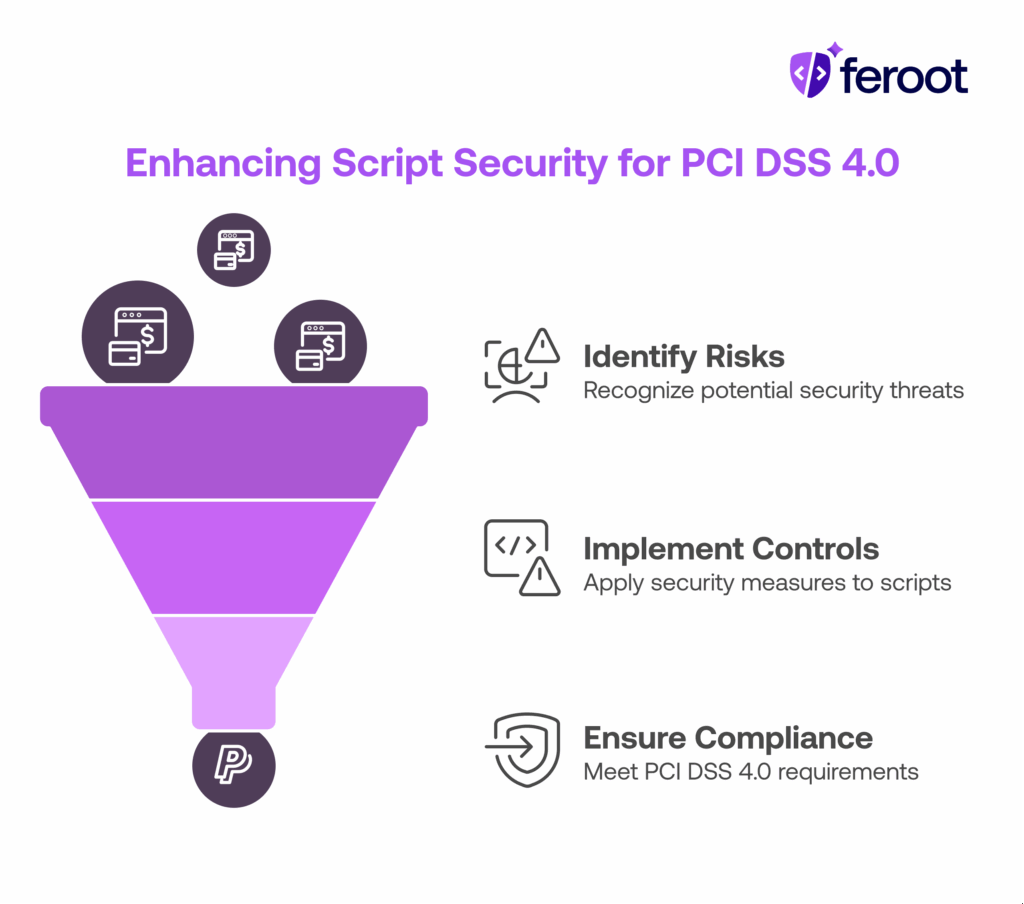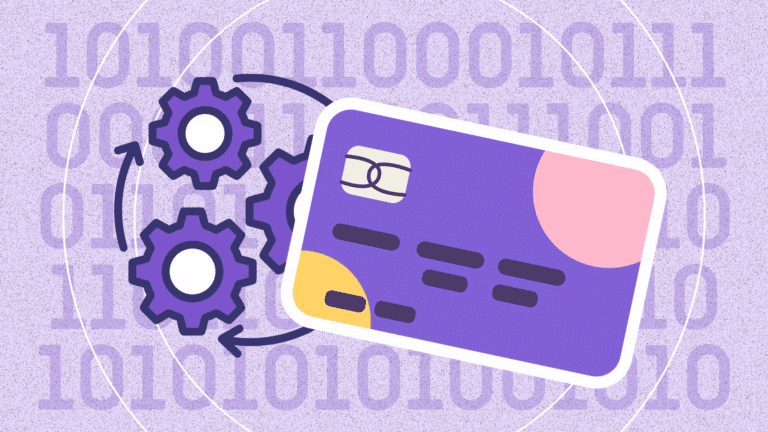TL;DR
- Feroot’s PaymentGuard AI provides real-time monitoring of script changes on payment pages
- CSP relies on static policies, which are often bypassed or misconfigured
- For PCI DSS 6.4.3 and 11.6.1 compliance, dynamic script tracking is essential
- Security teams using Feroot Security cut audit prep and reduce client-side risks
- Ideal for CISOs securing payment environments under PCI DSS 4.0
What’s at Stake: Why Script Security Matters for PCI DSS 4.0
PCI DSS 4.0 introduces explicit controls for managing client-side scripts on payment pages — a common target for digital skimming, Magecart, and formjacking attacks.
Without robust tools, CISOs face two risks:
- Compliance failure under 6.4.3 and 11.6.1
- Security breaches due to unmanaged or malicious scripts
- Static controls like CSP offer partial protection, but PCI 4.0 demands continuous, dynamic visibility into the scripts running in the browser.

How Does Content Security Policy (CSP) Work — and Where Does It Fall Short?
CSP is a browser-level policy that defines which domains scripts can load from. It helps prevent:
- Cross-site scripting (XSS)
- Injection of unauthorized scripts
However, CSP is limited because:
- It doesn’t detect changes in script behavior over time
- Attackers can bypass CSP with clever obfuscation or allowed domains
- It’s difficult to maintain in dynamic environments like eCommerce
- It offers no audit reporting or control verification for PCI DSS
Example: A CSP might allow scripts from trustedvendor.com, but if that domain gets compromised, malicious scripts still load — and go undetected.
What Is Feroot’s PaymentGuard AI and How Does It Work?
Feroot PaymentGuard AI is a purpose-built platform for client-side script security and PCI DSS compliance.
It monitors what CSP can’t:
- Detects unauthorized script changes in real time
- Logs all script behavior on payment pages
- Auto-maps findings to PCI DSS 4.0 Requirements 6.4.3 and 11.6.1
- Delivers audit-ready reports for internal and external assessments
Bonus: It works without breaking page functionality or requiring teams to rewrite CSP headers.
How Do These Tools Handle Dynamic Script Behavior Over Time?
Scripts on modern web applications — especially payment pages — change frequently due to:
- Third-party vendor updates
- A/B testing and personalization tools
- Marketing or analytics script injections
- CI/CD pipeline deployments
CSP Falls Short with Dynamic Environments
CSP is a static policy — it lists allowed script sources, but:
- Doesn’t analyze what scripts do
- Can’t detect behavior changes after deployment
- Fails silently if attackers inject malicious code from allowed domains
Example: If a known domain (e.g., cdn.vendor.com) starts delivering malicious code, CSP won’t block or alert — because the domain is still allowed.
Feroot Tracks Script Behavior Continuously
PaymentGuard AI creates a baseline behavior profile for each script — including:
- Where it loads from
- What actions it performs in the browser
- Any sensitive fields it interacts with (e.g., card number inputs)
It then monitors for deviations like:
- New network calls to unknown domains
- Unexpected access to payment fields
- Code changes not authorized by your security policy
When deviations occur, Feroot triggers alerts and logs the change — satisfying PCI DSS 11.6.1’s detection requirement.

PCI DSS 6.4.3 vs 11.6.1: What Do They Require for Script Monitoring?
| Requirement | Focus | What You Must Do |
| 6.4.3 | Script Authorization | Maintain inventory of all scripts and validate their integrity |
| 11.6.1 | Script Change Detection | Detect and alert on changes to scripts on payment pages |
Meeting both requires more than static policy — it demands real-time, behavior-based monitoring.
CSP alone cannot meet 11.6.1’s requirement to detect and alert on script changes.
How Does Feroot Help CISOs Automate Compliance and Reduce Risk?
Feroot streamlines compliance with PCI DSS 4.0 by monitoring and enforcing security controls in the browser — the environment where most payment fraud begins.
Why this matters:
- Client-side risks (e.g., injected scripts, tracking pixels) are commonly exploited but overlooked by backend-focused tools
- Traditional compliance tools don’t inspect browser behavior — Feroot does
What Feroot delivers:
- Real-time alerts for unauthorized script changes (11.6.1)
- Validated script inventory (6.4.3)
- Continuous monitoring and reporting
- Integration with DevSecOps and compliance workflows
FAQ
How does compliance automation improve audit outcomes?
Automated tools like Feroot log all client-side activity and generate audit-ready reports — eliminating manual tracking and gaps.
Can CSP alone satisfy PCI DSS 6.4.3 or 11.6.1?
No. CSP is not sufficient for detecting changes or generating validated inventories. PCI DSS 4.0 requires more visibility and control.
What if our payment page scripts change frequently?
Feroot dynamically tracks all changes and only flags unauthorized or risky behavior, avoiding alert fatigue.
Does Feroot integrate with our DevSecOps workflows?
Yes — it integrates with CI/CD, SIEM, and ticketing tools to fit into your existing stack.
Is Feroot PaymentGuard auditor-approved?
Feroot delivers reports mapped directly to PCI DSS 6.4.3 and 11.6.1 controls — used by companies preparing for formal audits.
Conclusion
For CISOs managing PCI DSS 4.0 compliance, script security on payment pages isn’t optional — it’s a core requirement.
CSP offers baseline protection, but lacks visibility and auditability. Feroot PaymentGuard AI fills that gap with real-time monitoring.


